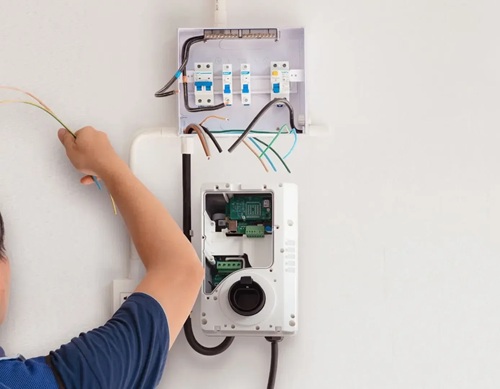


Ensuring Safe EV Charging: The Crucial Role of Residual Current Devices (RCDs)
Ensuring Safe EV Charging: The Crucial Role of Residual Current Devices (RCDs)
LiCB Charge, a leading EV charger manufacturer in China, delivers reliable AC and DC electric vehicle charging stations along with comprehensive charging solutions.
As electric vehicles (EVs) become an integral part of our transportation landscape, the safety and reliability of their charging infrastructure have never been more important. A key component ensuring this safety is the Residual Current Device, or RCD. These devices are vital for protecting users from electric shocks and preventing electrical fires caused by ground faults.
An RCD is a safety device that constantly monitors the electrical current flowing through a circuit. If it detects an imbalance—such as leakage from live to earth—it quickly cuts power to prevent harm. In EV charging, where high currents and voltages are involved, this protective function can be life-saving.
In EV chargers, RCDs continuously compare the current between live and neutral conductors. If the difference exceeds a safe threshold (usually 30 milliamps), the device trips and cuts off power. This interruption stops potential electric shocks and reduces fire risks, especially important given EV chargers are often installed outdoors or in high-use public spaces.
International electrical standards like IEC 60364-7-722 mandate that every AC charging point must have an RCD rated at no more than 30 mA residual current. This requirement reinforces the crucial role of RCDs in EV safety—but the right choice of RCD type is key.
There are several RCD variants, each suited to different electrical conditions:
Type AC RCD: Detects only alternating sinusoidal currents; insufficient for EVs due to inability to detect DC faults.
Type A RCD: Detects AC and pulsating DC currents; better but may miss smooth DC leakage above 6 mA common in advanced EV systems.
Type F RCD: Handles mixed frequency currents; mainly used in appliances with frequency converters but rarely applied in EV chargers.
Type B RCD: Detects AC, pulsating DC, and smooth DC currents up to 1 kHz; the most comprehensive protection and widely recommended for modern EV charging.
Modern EV chargers often incorporate complex electronics and DC components, which can generate DC leakage currents that lower-grade RCDs cannot detect. Type B RCDs, designed specifically to identify all types of residual currents—including smooth DC—provide the highest safety margin, preventing “blind spots” where faults could go unnoticed.
Match the RCD to the Charger: Fast DC chargers almost always require Type B devices. For AC chargers, Type B remains the safest bet, especially if DC leakage is possible.
Environmental Considerations: Outdoor installations demand RCDs with robust casing and weatherproof ratings.
Regular Testing & Earthing: Proper grounding and routine testing ensure the RCD’s continued reliability.
While Type B RCDs come at a premium compared to Type A or AC types, their advanced protection justifies the investment—particularly in commercial or public charging where safety liabilities are significant. As DC fast charging and intelligent systems proliferate, Type B RCDs are becoming the baseline standard.
As EV charging evolves to include bidirectional power flows (vehicle-to-grid), solar integration, and energy storage, RCD technology will also advance—incorporating smart diagnostics and remote monitoring. Nonetheless, the core need for reliable detection of all fault currents remains paramount.
RCDs are a foundational safety element in EV charging infrastructure, safeguarding users and assets alike. Choosing the appropriate RCD—ideally a Type B device—ensures compliance, enhances protection, and future-proofs your charging installation.
In the accelerating world of electric mobility, make safety your priority by equipping your EV chargers with the right RCD. Charge smart, charge safe.Learn more about Google SEO.
